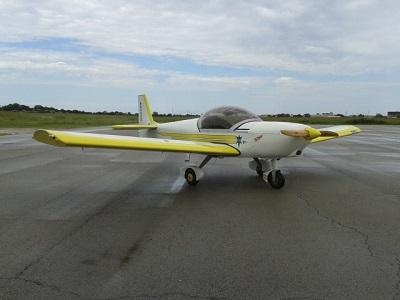If You Buy An Already Completed Experimental Amateur Built Aircraft, You Need To Understand Continued Airworthiness Requirements
Buying an experimental amateur built (E-AB) aircraft that has already been completed can be a great way to own an aircraft that is unique and different. However, it’s been found that many downline owners, that means someone who buys an already built E-AB, may not understand the nuances and differences of continued airworthiness requirements. They are not the same as an FAA type certificated airplane.

The definition of the term maintenance as it applies to aircraft is found in 14 CFR (FAR) Part 43, and FAR 43.1 makes it clear that FAR 43 does not apply to an E-AB. The way FAR 43.1 is written it could even be implied that the term “maintenance” is not applicable to an E-AB. However, we’ll use the term because it makes sense.
When the builder of an E-AB receives the airworthiness certificate for an aircraft, that builder also becomes eligible to apply for what is referred to as a “Repairman Certificate.” This terminology can be confusing because this certificate actually has nothing to do with maintaining or repairing the aircraft. The Repairman Certificate allows the original builder to perform the annual condition inspection and has nothing to do with regular maintenance or repairs.
The simple fact is, anyone may perform maintenance or repairs on an E-AB; no maintenance certification of the individual working on the aircraft is required (Certain IFR equipment and Avionics may require FAA approved maintenance). Of course, common sense dictates that whoever is working on the aircraft had better know what they’re doing.
Since anyone is allowed to work on, repair, or modify an E-AB aircraft, perhaps we should ask; how much work, repair, or modifying is allowed? Once again, the regulations don’t really touch on this but the operating limitations issued to the aircraft at the time it was certificated do reference major changes. The operating limitations say that after a major change as described in FAR 21.93, the aircraft does have to meet other requirements and the FAA will be brought back into the process.
The aircraft must be inspected annually, and a logbook entry must be made stating that the aircraft is in safe condition for flight; even this endorsement is different from what you would find on a type certificated aircraft. The original builder who holds a Repairman Certificate, as mentioned before, can perform the inspection. If the aircraft has moved on to other owners and the original builder is no longer involved, the annual condition inspection must be performed by an A&P mechanic (inspection authority is not required).
It’s important to remember that the kit manufacturer is not the manufacturer of the completed aircraft. You may find that some kit manufacturers has some sort of program to help downline owners, but there is no requirement for them to do so. Depending upon the engine installed in the E-AB, engine manufacturers may still remain in the picture for repairs and service.
Owning and operating an E-AB aircraft does make the maintenance side of the operation simpler, but it also places more responsibility on the owner and pilot operating the aircraft to make sure it is safe.
(Image of experimental amateur built Zodiac 601XL-B from File)
 NTSB Final Report: Rutan Long-EZ
NTSB Final Report: Rutan Long-EZ ANN FAQ: Turn On Post Notifications
ANN FAQ: Turn On Post Notifications Classic Aero-TV: ICAS Perspectives - Advice for New Air Show Performers
Classic Aero-TV: ICAS Perspectives - Advice for New Air Show Performers ANN's Daily Aero-Linx (06.28.25)
ANN's Daily Aero-Linx (06.28.25) Aero-News: Quote of the Day (06.28.25)
Aero-News: Quote of the Day (06.28.25)



